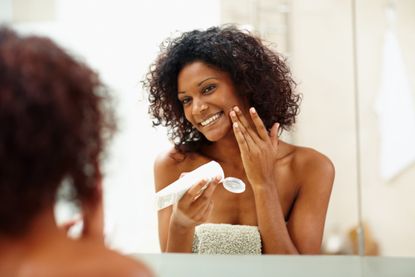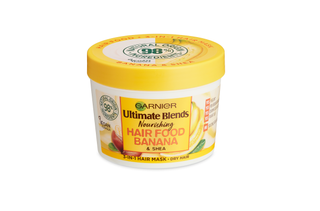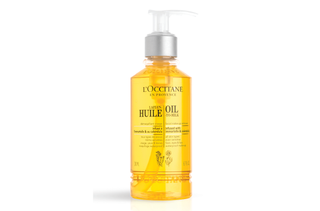12 common beauty myths, answered by a team of experts

From moisturise-and-go types to the self-confessed beauty junkies, most of us have at least a passing interest in beauty.
With everyone from your mates to your mum, journalists to influencers, all keen to share their beauty wisdom - how do we know who to trust? Whether you’re sceptical about how often you need to wash your hair, whether you can get rid of liver spots or dark circles under your eyes we’ve got you covered. Read on for expert-approved answers to the most commonly asked beauty questions. By separating out the fibs from the fiction, we’ll not only save you time and effort, but your hard-earned cash too…
1. Can you get rid of age spots?
‘There’s not very much you can buy without a prescription that will significantly reduce dark spots,’ says Dr Nick Lowe, consultant dermatologist at Cranley Clinic London. ‘Vitamin C products can be helpful though.’
‘Classic age spots are areas of pigmentation that occur primarily because of sun exposure, not age,’ adds Dr Jonquille Chantrey, surgeon and founder of ONE Aesthetic Studio. ‘People can develop these relatively young if they have had significant sun exposure.’ Prevention is always better than cure, so a daily SPF is non-negociable.
The relationship between the sun and dark spots is simple. Dark spots are caused by an overproduction of melanin, the pigment that gives our skin its colour (and a deeper tan). As we reach menopause, our melanin cells can start to produce pigment too quickly, leading to a rise in dark spots.
If you don't like the feeling of sun cream, La Roche-Posay Anthelios Pigmentation Tinted Cream SPF50+, £20 on Amazon, is more like a tinted moisturiser. At night, use a topical antioxidant like Niod Re:Pigment Multi-Pathway Brightening Serum, £40 on Look Fantastic, to help fade existing marks. If you’re worried about new or persistant dark spots, visit your GP.
2. Does plucking one grey hair mean more come back?
‘If only the beauty myth that plucking grey hairs causes more to grow back were true. It really would be a great way to get thicker hair,’ says Anabel Kingsley, trichologist at Philip Kingsley. In fact, it's the opposite, as ‘pulling out hairs repeatedly can damage the follicle, creating areas of hair loss.’
‘The rumour most likely came about as when you see one grey hair pull it out, you then start searching for others. Usually, there will be more lurking about in the area, and when you find them you’re convinced that plucking made it worse.’
GoodtoKnow Newsletter
Parenting advice, hot topics, best buys and family finance tips delivered straight to your inbox.
It's not easy to prevent grey hair, but if want to cover your salt and pepper strands in-between salon visits, L’Oréal Magic Retouch Instant Root Concealer Spray, £8 on Amazon, is a great quick fix. The targeted nozzle gets straight to the roots, seamlessly covering and blending greys.
For a longer-term solution, try John Frieda Defy Grey Brunette Blending Blow Dry Foam, £6 on Amazon. It's packed full of pigment, building up grey coverage every time you use it.
3. Can you get rid of pores?
Pores play an important role in skin function, so can’t be removed. On your face, they’re little hair follicles with a sebaceous gland underneath. These glands are responsible for producing oil, without which skin would be uncomfortably dry.
Although you can’t erase your pores completely, you can stop them becoming stretched or oversized. Still, Dr Jonquille Chantrey, warns to manage your expectations. ‘Reducing pore size is a challenge as the collagen and elastin network around the pore may be structurally weak, and therefore unable to shrink significantly,’ she explains.
Washing your face with a heavy-duty cleanser like Vichy Normaderm Phytosolution Volcanic Mattifying Cleanser, £15.50 on Vichy, is a good place to start. Using charcoal and clay, it effectively soaks up pore-clogging grime, make-up and sebum.
Invest in a salicylic acid toner like Paula’s Choice 2% BHA Liquid Exfoliant, £35 on Cult Beauty, too. This hero ingredient is a must-try for skin prone to black or white heads, travelling deep into pores to clear out congestion.
4. Does cutting hair make it grow faster?
‘A hair cut will not make your hair grow faster, but it will help to improve and maintain the quality and density of your ends,’ explains Anabel Kingsley. ‘The rate at which hair grows, and the length to which it will grow, is genetically determined. For most, this is 0.5 inches a month, with a growth (anagen) phase that lasts between 3-7 years. There is nothing you can do to speed this up.’
‘However, it’s very common for hair not to grow as well as it’s capable of, and to fall out before it reaches the length it ought. Hair is a very reactive tissue, and unlike other tissue's in the body, it is classed as ‘non-essential’. As you can survive without it, your body gives it last priority. Everything from a poor diet and vitamin deficiencies, to high stress levels and hormonal imbalances, can negatively affect the growth of your strands.’
To stop frazzled lengths from snapping off in-between trims, treat hair with a split-end sealer. We like Philip Kingsley Bond Builder Split End Remedy, £27 on Look Fantastic.
5. Do anti-ageing products work?
Unfortunately, nothing can turn back the clock on your skin, but some ingredients can make it look and behave more like younger skin. ‘Retinol and AHAs encourage skin renewal to reduce the appearance of wrinkles, even out skin tone and improve moisture retention,’ explains celebrity facialist and skin expert Abi Oleck.
If rumours of redness and flaking have put you off retinol in the past, give La Roche-Posay Retinol B3 Serum, £48 at Look Fantastic, a go. Formulated for sensitive skin, it uses slow-release retinol for impressive results with no irritation.
Elemis Superfood AHA Glow Cleansing Butter, £28 at Look Fantastic, is a great way to harness the glow-giving powers of alpha-hydroxy acids. Remove your make-up first, and use this butter as your second cleanse. It'll be able to work harder with daily grime out of the way.
Working a bit like topical filler, hyaluronic acid is another great anti-ageing ingredient. Layer The Ordinary Hyaluronic Acid 2% + B5, £15 at Look Fantastic, under your moisturiser to plump fine lines and wrinkles.
6. Are acids good or bad for skin?
Punchy peels and high strength acids can offer great results, but not all everyone's skin can tolerate them. Exfoliating acids like AHAs and BHAs work their magic by dissolving the glue that holds dead skin cells together, revealing the shiny new skin beneath. In low doses, they should be suitable for most skin types.
But, if your skin is sensitive, the uncomfortable inflammation intense acids can cause far outweighs any potential benefits. For best results, start by using a low dose just a couple of times a week, building up both the usage and percentage as your skin adjusts.
If you’re new to AHAs, ‘avoid the most aggressive, glycolic acid,’ advises Abi Oleck. ‘Instead, choose lactic acid.’ The larger molecule size means less chance of irritation. And, because lactic acid is derived from milk, it hydrates skin too. Use in a grainy manual scrub like Soap & Glory Scrub in The Fast Lane 2 Minute Facial Polish & Peel, £10, to leave skin soft and glowing.
7. Can moisturisers help with cellulite?
First things first, cellulite is really common – with 90 per cent of all women developing the dimpled, orange-peel effect on their bum, belly and thighs. Unfortunately, it’s not something that can be reversed with lotions and potions. ‘For skin tightening and fat reduction, you need to reach a certain depth to garner results, so creams will only benefit the surface,’ explains Florina Vranau, aesthetician at Linnaean Medi-Spa.
There are plenty of in-clinic ‘tweakments’ that can help improve the appearance of cellulite, including toning treatment EMSculpt. It uses high-intensity electromagnetic energy to trigger contractions, which force the body to build, tone and reduce fat. Just one session is equivalent to an eye-watering 20,000 squats or sit ups.
If you don’t want to go down the ‘tweakments’ route to improve the area in clinic, try dry body brushing. Massaging your thighs with a firm-bristled tool like Aromatherapy Associates Polishing Body Brush, £25, will kick start circulation. The result? Softer, smoother-looking skin.
8. Are eye creams really necessary?
‘The skin around the eyes is fragile, quicker to wrinkle and more prone to dryness than the rest of the face,’ says Abi Oleck. But that doesn’t necessarily mean it needs to be treated with a dedicated cream. In most cases, carefully using a hydrating lotion like Simple Triple Protect Moisturiser SPF30, £6.99, will be just as effective.
It’s how you apply products to your eye area that really counts. Using your ring finger, take the time to gently tap serum along and around the orbital bone. Start from the inner corners, working in a loop. It’s easy to overload this delicate skin with product, so only use a tiny bit at a time.
If your eyes are sensitive, prone to puffiness or watering, you might still prefer to use a separate eye cream for peace of mind. Boots Glow Eye Cream, £4, is light, refreshing and a real bargain. If your eyes are sensitive, prone to puffiness or watering, you might still prefer to use a separate eye cream for peace of mind. Boots Glow Eye Cream, £4, is light, refreshing and a real bargain.
9. Can you repair split ends?
It’s bad news for heat addicts or anyone who regularly colours their hair. According to Anabel Kingsley, ‘you cannot permanently heal a split end. The only cure is to cut them off. However, products can temporarily glue them together to stop them getting worse and splitting further up.’
But how can we stop hair from splitting in the first place? ‘Trimming your hair regularly is definitely one way to help avoid split ends,’ says Anabel, ‘but it’s definitely not the only way. If you treat your hair gently, and use products that bolster and protect strands, it will be much less susceptible to fraying.’
Garnier Ultimate Nourishing Hair Food Banana & Shea, £6.99, is one such protective product. By increasing hydration levels, hair becomes more elastic and less likely to snap off.
As for fine hair that’s splitting without the added pressure of heat styling, it might be time to swich your hairbrush. ‘Certain ones, like boar bristle brushes, can tear away sections of the hair shaft,’ says Anabel.
‘Colouring your hair and UV damage can also cause hair breakage. In certain cases, diet is to blame. If you don’t eat enough protein, your strands can become brittle.’

10. How can I make my tan last longer?
Whether your tan is the real deal or from a bottle, moisturising regularly is key to a long-lasting glow. ‘My number one tip for prolonging the life of your sunless tan is hydration,’ says tanning expert Amanda Harrington. ‘When your skin is hydrated your tan will look more radiant and fade more evenly.’
Max out your tan by slathering on a nourishing moisturiser like Amanda Harrington Ultimate Body Miracle Moisture Cream, £28. Your skin will thank you for it.
Skipping long baths, and turning down the heat on your morning shower can help too. ‘Keep showers tepid and be sure to pat yourself dry with a lightweight towel,’ advises Amanda.
Remember - not all skin and body care plays nicely with tan, fake or otherwise. Oil is notorious for breaking down fake tan pigment. Handy if when you’re dealing with a fake-tan faux par, but not if you’re trying to maintain your glow. Ingredients that speed up cell turnover, like retinol and alpha-hydroxy acids, will accelerate fade too.
11. How often should you wash your hair?
‘Your scalp is skin and needs similar care to the skin on your face - and for scalp health, daily cleansing is best,’ says trichologist Anabel Kingsley. ‘However, if you heat-style your hair after every shampoo, the good of cleansing will be outweighed by the damage of styling.’
‘Also, people with coarser and curlier hair often find they prefer how their hair looks and feels a few days after shampooing. It really is a case of balance. In all instances, I’d say don’t leave more than 3 days between shampoos.’
As for the beauty myth that hair will eventually start to clean itself over time, Anabel is quick to put that rumour to bed. ‘Your hair, just like any other part of your body, does not clean itself. Imagine if you didn’t wash your face or underarms for a week – the same logic applies to your hair and scalp. They are likely to become coated in dirt - smelly, greasy and flaky. Build-up of yeasts and bacteria will also occur, especially as they thrive in oily environments.'
‘I think that people believe this myth because it’s wishful thinking. If your hair looks less greasy after a while, perhaps it’s because once your scalp and hair get past a certain point of greasiness, you can’t really notice it as much. Much like you don’t really see stains forming on an already filthy carpet.’
If you’re in the market for a new shampoo, try OGX Refreshing Scalp + Teatree Mint Shampoo, £7.99. It delivers a deep, scalp-tingling cleanse, leaving hair soft, shiny and refreshed.
12. Can natural remedies get rid of dark circles?
‘Dark eye circles can be stubborn and resistant to treatment and there may not be a ‘quick fix’, explains consultant dermatologist Dr Anjali Mahto. ‘However, there are a number of options which can be explored.’
‘Treating dark circles involves firstly identifying the underlying cause for their development. The first and most important part of making a treatment plan is to rule out any other underlying medical conditions.’
‘Dark circles, or periorbital melanosis, can occur due to a variety of reasons. Causes include genetics, certain ethnic backgrounds, medical conditions such as eczema, lifestyle factors such as sleep, as well as skin ageing over time.’
For best results, Dr Anjali recommends trying any one of four different treatment options…
- Topical creams - "There are a number of ingredients that may help brighten the under-eye area. Some require prescription or guidance from a dermatologist such as hydroquinone, AHAs or tretinoin. These can cause irritation to the delicate eye area so do not use these without speaking to an expert first." If you’re buying over the counter, look out for ingredients such as vitamin C, azelaic acid, kojic acid, soy and niacinamide. Again, these should be used with caution around the eye area.’ AHC Essential Real Eye Cream For Face, £19.50, is formulated with ascorbic acid, the gold standard of vitamin C to brighten, as well as niacinamide to smooth fine lines.
- Chemical peels - "Peeling agents used in a clinic setting can help remove pigmentation from the superficial layers of the skin. For example, low percentages of trichloroacetic acid (TCA) and lactic acid can be used at this site on a regular basis to help fade pigmentation over time. This should only be done in a medical setting as there is a risk of making pigmentation worse or creating scarring if the right acids at the right percentages are not used."
- Lasers - "There are various pigment-lasers that can potentially help dark eye circles. Don’t let the names alarm you, but these include the Q-switched ruby and Alexandrite (694 and 755nm respectively) and Nd:YAG (1064nm). Safety is key when using lasers around the eyes as inappropriate use can result in blindness, dry eyes or sensitivity to light (photophobia)."
- Dermal fillers and fat transfer - "Hyaluronic acid fillers can be injected into the ‘tear trough’ or fat can be transplanted by a plastic surgeon under the eye to restore volume and improve dark circles. Patient selection is important for this - it isn’t suitable for everyone and may end up making things look worse not better if it is not done correctly!"
13. Do hormones or dirty skin cause spots?
‘Spots or acne develop due to the complex interplay of a number of factors,’ says Dr Anjali Mahto. ‘Hormones do play a part in that, as increased levels of androgen hormones in the skin lead can to excess oil production. This combined with sticky skin cells can block pores, and bacteria, which naturally live on the skin surface, can then drive inflammation. All these factors combined lead to spots in women.’
A poor cleansing scheme can play a part in breakouts too, but don’t panic. ‘Forgetting to remove make up or cleanse once in a while is unlikely to cause significant problems,’ advises Dr Anjali. ‘However long-term lack of appropriate cleansing in some people can lead to the build-up of dirt, sweat, grime, bacteria and potentially occlusive skincare products on the skin surface which may lead to break-outs.’

If you’re suffering from spots, there’s an understandable temptation to steer clear of oils. However cleansing oils are a great way to shift daily grime, as well as stubborn make-up. L’Occitane Oil to Milk Facial Make-Up Remover, £19.50, goes on like an oil, emulsifying into a gentle milk when mixed with water. Follow with CeraVe Foaming Cleanser, £9.50, to carefully rinse away excess oil without disrupting your skin’s barrier.
-
 Want to avoid meltdowns? Whether you have a toddler or a teen a child therapist reveals the 5 things to bear in mind
Want to avoid meltdowns? Whether you have a toddler or a teen a child therapist reveals the 5 things to bear in mindTeaching kids how to navigate their feelings can be difficult, but it's incredibly important for their development
By Charlie Elizabeth Culverhouse Published
-
 The 3 reasons you should never say this well-meaning phrase to your partner, according to an expert
The 3 reasons you should never say this well-meaning phrase to your partner, according to an expertIt may bring 'temporary comfort,' but the phrase can spell the end of a partnership
By Charlie Elizabeth Culverhouse Published